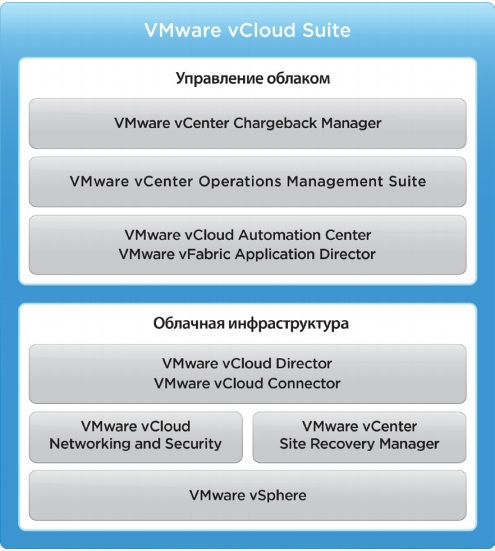Meet VMware vCloud Director
Today we would like to talk about the basics of working with vCloud Director (vCD), a product that allows you to create public, private and hybrid clouds. It's no secret that many IT administrators do not fully understand the fundamental difference between their vSphere infrastructure and the cloud, and they would like to know whether it is worth taking vCD into account at all.
Facts about vCD
vCD makes it possible to simplify business providers of various cloud services, allowing you to reduce the technological barrier in its use on the client side. What is a “cloud”? According to the NIST definition (version 15 dated 10/7/2009), the Cloud is a service model for providing, at the user's request, convenient remote network access to a common pool of tunable computer resources (networks, servers, storage, applications, services) that can be quickly prepared and implemented with minimal management and interaction with the cloud service provider.
When should a company pay attention to cloud technologies?
')
If the company does not have its own sufficiently competent IT staff (or the availability of such staff is not required on the basis of business goals), if cloud providers in the region have low tariffs, and the company does not process restricted information protected by law (to protect such information, specialized measures are often required and funds that providers do not have), then such a company can fully recommend the use of cloud services.
Based on this definition, it is clear that vSphere, as a virtualization environment, is not yet a cloud. The cloud in VMware implementations is the vSphere + suite of products from VMware, which adds this very service model in the interaction between the client and the service provider (see figure).

vCD is a level of abstraction with a self-service portal and multi-tenant support. For example, tenants may be customers of a service provider or a group of developers in a software company. They are offered their own flexible and secure virtual infrastructures, the work with which does not require an introduction to vSphere technology.
If you have a vSphere infrastructure, this, as mentioned above, does not mean that you are working with the cloud. Of course, such a system can be called arbitrarily, but it does not meet the minimum requirements for self-service and isolation from other tenants of the cloud. However, with vCD, you can turn the vSphere infrastructure into a real cloud.
In vCD, new workloads consisting of multiple virtual machines and customized applications, as well as various network topologies, can be deployed with a few clicks. Tenant protection and isolation, resource management and control over their use are all implemented at the vCD level.
vCD is a new and developing product (the current version is 5.1, and this is only the second release), and although all vCD features are available to any company, the main customers are, for now, service providers and large enterprises.
To deploy a vCD you need:
- A vSphere infrastructure with at least two ESXi hosts, a vCenter system, shared storage resources, and a vSphere Enterprise or Enterprise Plus paid license;
- A vCD is a installable Linux application that uses an Oracle or MSSQL database through a web interface (usually deployed as a virtual machine);
- vShield Manager;
- VMware Chargeback (optional);
Deploying a vCD lab
vCloud Director can be downloaded as a virtual device with a 60-day trial period in order to understand and test the new technology. Performing a complex installation using Linux commands or setting up a database (as for the full working version of this product) is not required. Remember that a virtual device is supported only as a test version in a lab environment. However, it is fully functional and ideal for learning about vCDs.
In addition to the virtual vCD device, it is also recommended to read the vCD Evaluator's Guide (in English), which describes the various features and functions of vCD. Do not forget about all the above requirements (two ESXi hosts, vCenter, vShield and a paid license). Theoretically, a virtual trial version of vCD can be deployed in a virtual laboratory in a Fusion or Workstation environment, but in this case, the performance may be lower than with a conventional virtual vSphere laboratory.
Cloud backup with multiple tenants
Veeam recently announced extended support for vCloud Director, which will be available in the new version of Veeam Backup & Replication v7. What does it mean? This means that Veeam Backup, using the vCD API, will be able to display the vCD infrastructure within itself, and the administrator will make backup copies of the metadata and attributes of virtual services (vApp), as well as restore virtual services and virtual machines directly in vCD.
Useful links:
- Learn more about VMware vCloud Director on the official website (in English);
- Learn about backing up and restoring a virtual environment using Veeam Backup & Replication ;
- Read about the future features of Veeam Backup & Replication v7 ;
- Download a free version of Veeam Backup Free Edition with no time limit on the use and number of virtual machines (not a trial version, but completely free);
Source: https://habr.com/ru/post/177489/
All Articles